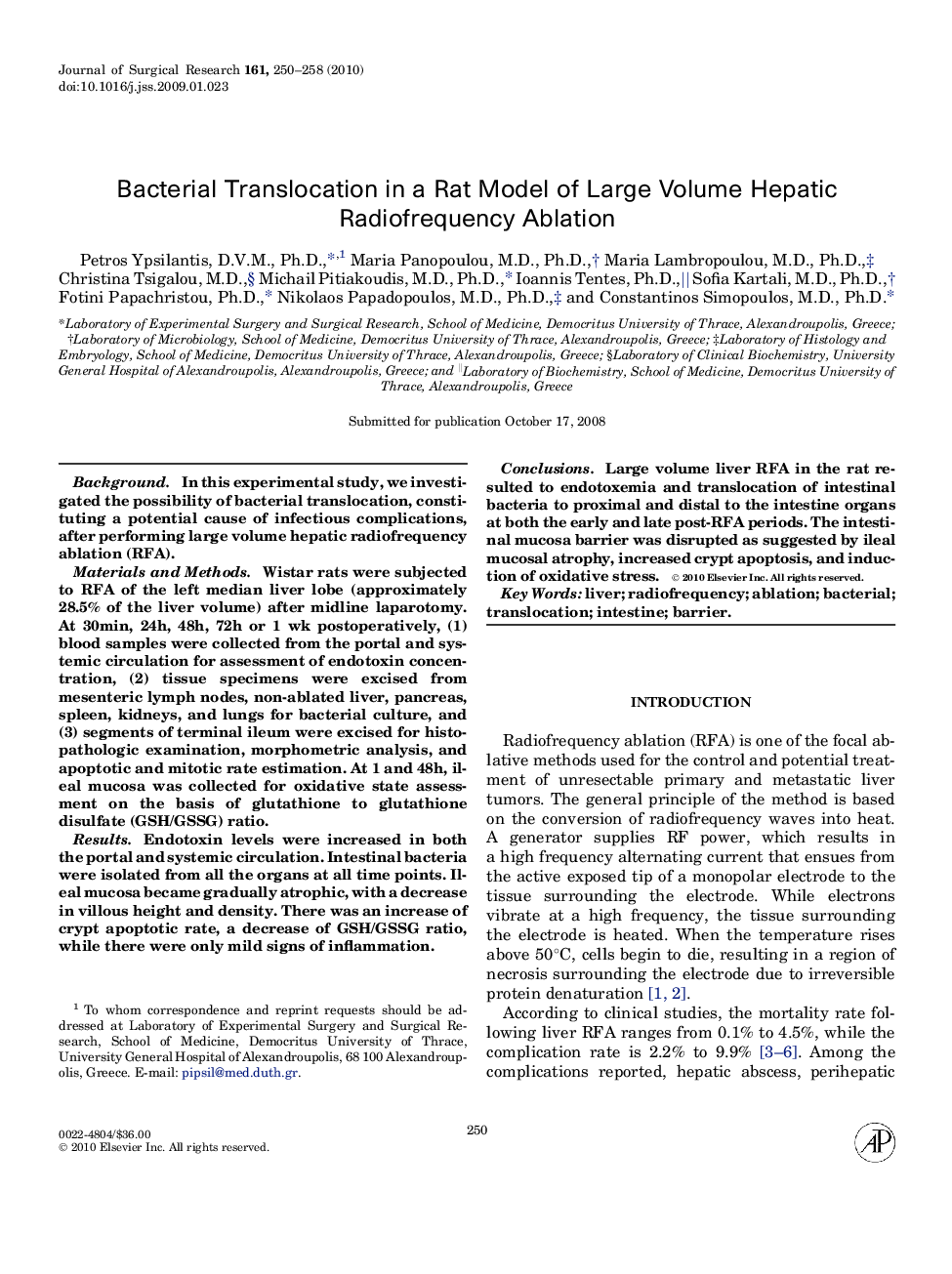| Article ID | Journal | Published Year | Pages | File Type |
|---|---|---|---|---|
| 4302869 | Journal of Surgical Research | 2010 | 9 Pages |
BackgroundIn this experimental study, we investigated the possibility of bacterial translocation, constituting a potential cause of infectious complications, after performing large volume hepatic radiofrequency ablation (RFA).Materials and MethodsWistar rats were subjected to RFA of the left median liver lobe (approximately 28.5% of the liver volume) after midline laparotomy. At 30min, 24h, 48h, 72h or 1 wk postoperatively, (1) blood samples were collected from the portal and systemic circulation for assessment of endotoxin concentration, (2) tissue specimens were excised from mesenteric lymph nodes, non-ablated liver, pancreas, spleen, kidneys, and lungs for bacterial culture, and (3) segments of terminal ileum were excised for histopathologic examination, morphometric analysis, and apoptotic and mitotic rate estimation. At 1 and 48h, ileal mucosa was collected for oxidative state assessment on the basis of glutathione to glutathione disulfate (GSH/GSSG) ratio.ResultsEndotoxin levels were increased in both the portal and systemic circulation. Intestinal bacteria were isolated from all the organs at all time points. Ileal mucosa became gradually atrophic, with a decrease in villous height and density. There was an increase of crypt apoptotic rate, a decrease of GSH/GSSG ratio, while there were only mild signs of inflammation.ConclusionsLarge volume liver RFA in the rat resulted to endotoxemia and translocation of intestinal bacteria to proximal and distal to the intestine organs at both the early and late post-RFA periods. The intestinal mucosa barrier was disrupted as suggested by ileal mucosal atrophy, increased crypt apoptosis, and induction of oxidative stress.
